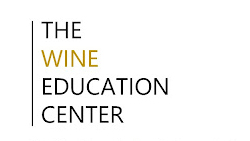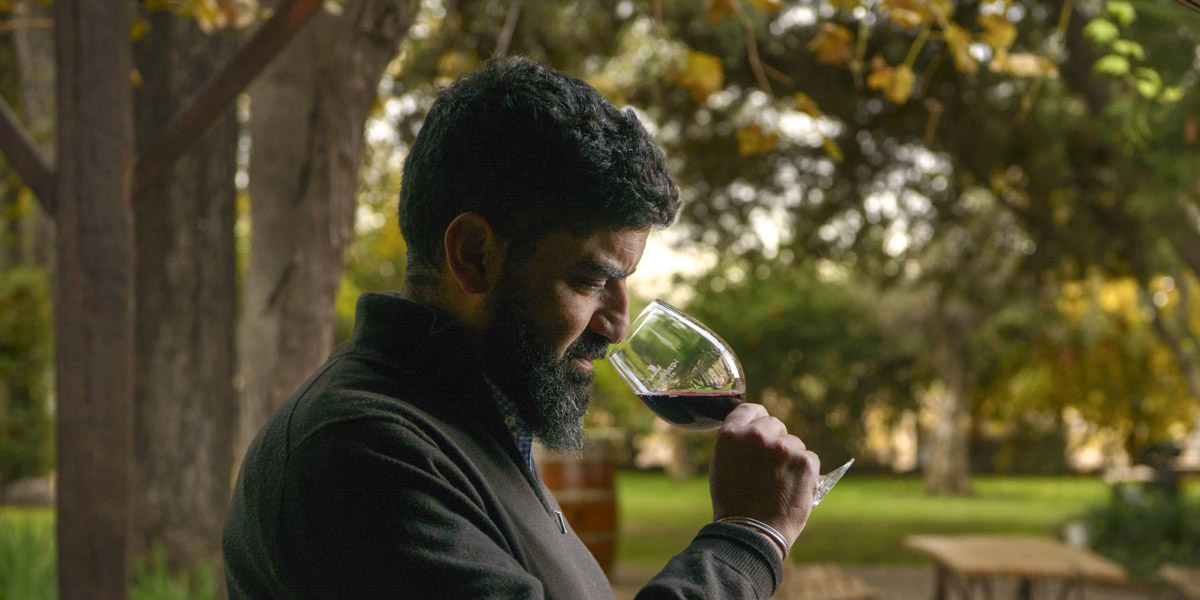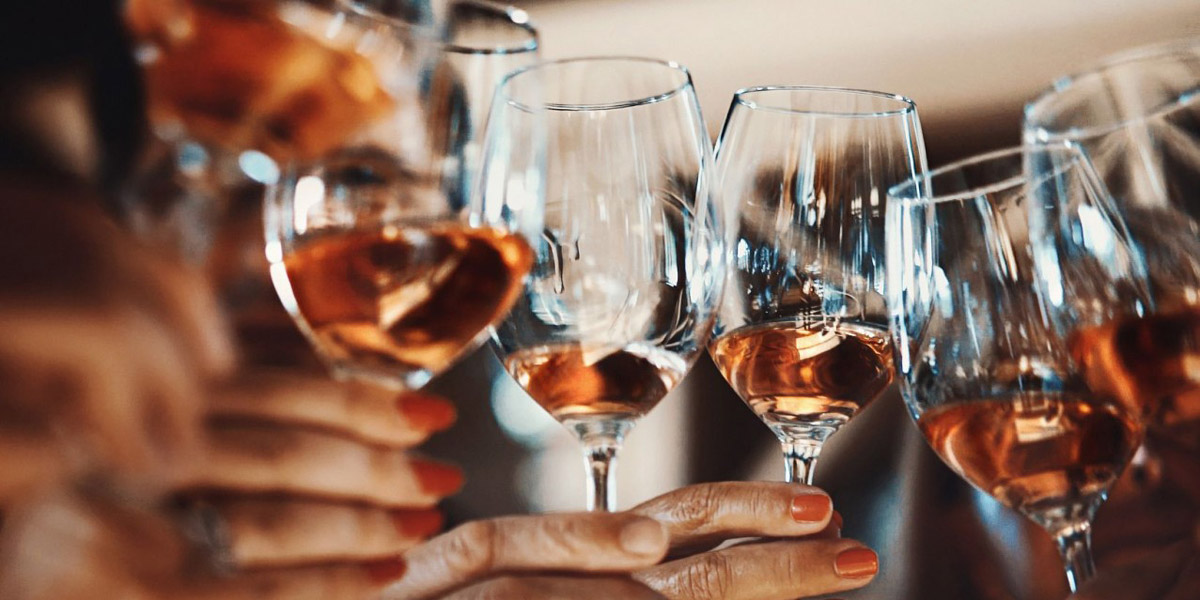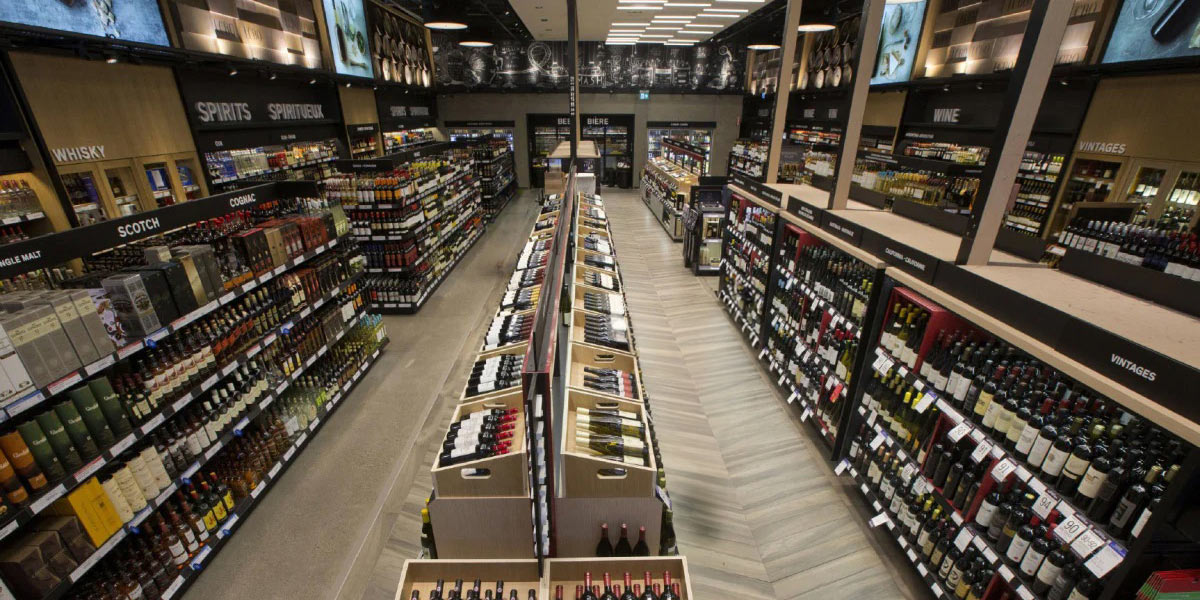Your cart is currently empty!
01 Apr Karim Mussi Saffie and the Art of Persistence
My 8-year-old daughter would start this article writing “My favorite person in the whole wine world is Karim Mussi Saffie”. You may not know him yet but, after reading this article, you will love him. Karim Mussi Saffie, family man, born in 1974, is one of the most innovative Argentinean winemakers from La Consulta, Uco Valley in Mendoza, Argentina. He is the head winemaker and owner of Karim Mussi Winemaker, a holding that owns Altocedro Winery, in La Consulta, Uco Valley in Mendoza; Abras in Cafayate, Salta (these first two wineries are terroir driven ones) and Alandes, a beautiful project where Karim makes wines along the Andes mountain ranges terroirs, from Salta, through Mendoza to Patagonia. The result are wines so unique that tasting them feels almost as a wine educational experience.
I met Karim a couple of years ago, during an event organized by Karim’s Dutch importer in The Netherlands. From the very first moment we clicked. I found him fascinating, incredibly knowledgeable and generous. He is the kind of guy that is willing to spend hours with you for the simple reason of sharing his knowledge. Karim belongs to the new generation of young Argentinean winemakers, but I believe that despite his youth, he has an old soul. Those souls that the early pioneers and explorers used to have. He is adventurous, curious, persistent, thirsty for knowledge, an erudite person. He is constantly looking out for new opportunities. But, in spite of his serious appearance, he is incredibly funny, warm and welcoming. It is amazing how his personality is reflected in his wines as they are elegant, complex, full of flavors, but still fresh and approachable and most importantly, they are persistent as they hold well through the passage of time.
The more I knew this man, the more I wanted to understand him, so I could understand and appreciate his wines. I believe that a wine is a mirror of the winemaker. So, I established two interviews with him, with the excuse of writing this article, but most importantly, to ease my curiosity.
His origins
To try to understand Karim, first you need to know his history. His grandparents were the first arriving to South America from the Middle East. One side of the family came from Lebanon and the other from Palestine. Both families had to escape their countries of origin due to a religious persecution that took place in both countries during World War I. Both families belong to a religious minority in those countries. With what they could carry with them, the Lebanese family found shelter in Mendoza, Argentina, and the Palestine family in Chili. Both families, with perseverance, determination, sacrifice, and hard work, managed to build a future in their new countries. Fate then wanted for the Lebanese and Palestine grandparents to become close friends, and this is how Karim’s parents met. Right before his father married his mother, he moved to Chili to help his future wife and her mother, as she had lost her dad at an early age. In Chili, Karim’s father studied a new career in those days: international commerce. Once they moved back to Mendoza, already married, he opened what became, after a lot of hard work, sacrifice, and persistence, one of the most important Argentinean companies which commercialized concentrated grape must.
From a young age, Karim, the eldest of three siblings, accompanied his father to business meetings at different wineries to learn the family business. However, the more he visited wineries and learnt about wines; the more he felt deeply in love with it. He found beauty in wine, like an artist finds beauty in colors or sounds or words. But most importantly, since then, he felt the need to share beauty and in wine he found his way of expression. Also, he saw wine as a cultural object. Through wine, people outside Argentina get to know the country, its food, and its people. In addition, he told me that his mother and sister are exceptional cooks. He grew up in a house filled with exciting aromas and flavors, a delightful blend of Middle Eastern and Argentinean traditional cuisines. Cooking was a way to show love and affection to others. It was also of tremendous importance the way the dining table was set up. Every little detail counted as well as the manners at the table. He told me that his mom’s cooking became very famous among his friends. They all wanted to stay for lunch, teatime, or dinner because there were always various sorts of different delicious food for everyone and a gorgeous table set-up. This led Karim’s friends to coin a phrase that they keep using today: “Comer a lo Mussi” (To eat like at Mussi’s family). His friends would go back to their homes and ask their mothers if they would cook as varied and as delicious as they had eaten at Karim’s house. It is my opinion that you can identify this in Karim’s wines because they are precise, clean and gastronomic. It looks as if Karim is creating wines already with a certain type of food in his mind. In addition, every single detail is taken care of, like the bottle presentation. The labels are in sync with the expression of the wines to create a harmony between the wine and the packaging.
Persistence, his dogma
When I asked him about what wine meant to him besides beauty inside of a bottle, he told me that for him wine is another way to transcend, to go beyond one’s mortality. That the vines he plants today, most likely will still be there after he is gone. But he doesn’t speak from a dark, pessimistic place, on the contrary. He explained to me that when your life is in line with nature’s life cycles of the vines, your understanding of life changes completely. You become more aware of things like life and death. He gave me an example of when the vines go dormant during the winter. It is a sort of a “short death”, and when spring arrives is like a renaissance, a re-birth. So, when you are more aware of these natural processes, it gives you inexplicable freedom and comfort. You know you will die eventually, but what matters is how you enjoy your life here. That brought to my mind what Russell Crowe said in the movie Gladiator by Ridley Scott: “What we do in this life, echoes in eternity”.
In the mid-1990’s, when Karim was in his early twenties, after finishing his engineering and this technical oenological study, he told his father that he didn’t want to be part of the family business. Instead, he wanted to make wine. He wanted to refurbish an old winery that the family owned in La Consulta and borrow some money from his father to plant his first vines. His father refused, telling him that he was crazy, that this was something the Italians did, that Italians knew about vines and vineyards. They were of Lebanese origin and what they knew was commerce. This was his welcome into the wine business world. But something he learnt from his family history was that if he perseveres and works hard, he could achieve all his dreams. Disregarding his father advice, at the age of 24 (in 1999) he opened his first winery called Altocedro and he became one of Uco Valley’s first developers of La Consulta as a fine wine terroir, in Mendoza, Argentina. Today, La Consulta is regarded among the top terroirs of the country.
This dream life I’m telling you about didn’t come so easy. Karim went through a very tough journey, among other things, he was victim of theft, scams, racial discrimination due to his origins, etc., but he never gave up. Moreover, he was in Argentina, a country famous for its constant economic instability. When I asked how he survived so many different crises that hit the country, he explained to me that when others see a problem, he is looking for the opportunity. What you learn in Argentina is to live in a constant survival mode, which has the advantage of removing the fear out of you and instead of fighting the crisis, you start thinking how you can find solutions that fit your business. This gives you a lot of elasticity. It is extremely difficult to get a bank loan in Argentina, not only due to the bureaucracy involved but also due to the outrageous interest rates. The first time he went into a bank to ask for a loan to open Altocedro, the bank director, after having him present his project and modify it for almost a year told him in his face to give up as he was never going to loan 300,000 USD to a 24-year-old kid. That was his welcoming to the Argentinean entrepreneurial world. He understood then that he had to do everything by himself, he only needed to be persevering. Karim said that in those times he had 3 evils: lack of knowledge, lack of funds, and lack of infrastructure. But that didn’t discourage him. Despite all the sacrifices that needed to be done, he knew he was on the right path. He was working the vineyard and the winery by himself. Many nights he slept in his truck while the winery was not yet finished. Against all odds, he kept on moving forward. It was through his father, who became one of Karim’s most important mentors, that he reached out to Carlos Pessutti from the former Bodegas Giol, once the biggest winery in the world, to be his winemaker and mentor. Together with him, they did the 2001 and 2002 vintages. When Carlos decided to leave Altocedro after the 2002 vintage, he told Karim that he was ready to become the Altocedro winemaker. With all the fears and doubts that come along when you are doing something by yourself for the very first time, but with a strong belief in the project, Karim did the 2003 vintage and with this he got his first 90 points wine spectator. In 2006 he got 92, and in 2008 the wine was chosen among the 100 top wines by Wine Spectator.
Another key point to survival Karim mentioned is to understand and know the nature of the wine business. It is easier to transform grapes into wine than wine into money. One of his biggest challenges was the transformation of his winery into a fully functioning company. It took him around 10 years to make it happen. In addition, innovation is also key to stay in business. In such a traditional industry, one must create wines with personality, different from the rest. And yet, part of the innovation is not to change. You need to stick to your values, your dogmas, what you believe in. In the long run, the industry will understand what you wanted to do. As Karim put it: “you tell a tree by its fruit”. One of Karim’s innovations is the wine “El Jardín de los Caprichos” (The Garden of Whims). He made it out of gratitude towards the winery’s visitors. He wanted them to take home something unique. This wine, of which not two vintages are the same, is only sold at the winery shop. They are unique and limited. Once a vintage is sold out, it’s gone forever. He already produced twenty-three vintages. This experience also took Karim on an adventure into the NFT world, a project he is currently developing.
My final thoughts
His life story and achievements are a source of inspiration to me. Sometimes we see a tough road ahead in this wine industry, but what I learnt from Karim is that I just need to hold on tight to my values and what I believe in and persevere
NOTE: Always drink in moderation. Remember to drink water while enjoying your glass of wine, the “divine proportion” is, one glass of water per glass of wine





